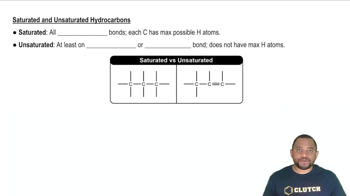Here are the essential concepts you must grasp in order to answer the question correctly.
Solubility Product Constant (Ksp)
The solubility product constant (Ksp) is an equilibrium constant that applies to the solubility of sparingly soluble ionic compounds. It is defined as the product of the molar concentrations of the ions, each raised to the power of their coefficients in the balanced dissolution equation. For lead(II) azide, Ksp can be calculated using the concentrations of lead ions and azide ions in a saturated solution.
Recommended video:
Solubility Product Constant
Dissociation of Ionic Compounds
Ionic compounds dissociate into their constituent ions when dissolved in water. For lead(II) azide, the dissociation can be represented as Pb(N3)2(s) ⇌ Pb2+(aq) + 2N3-(aq). Understanding this dissociation is crucial for determining the concentrations of the ions in solution, which are necessary for calculating Ksp.
Recommended video:
Saturation and Concentration
A saturated solution is one in which the maximum amount of solute has been dissolved at a given temperature, leading to an equilibrium between the dissolved ions and the undissolved solid. The concentration of ions in a saturated solution is essential for calculating Ksp, as it reflects the equilibrium state of the system. In this case, the concentration of Pb2+ is given, and the concentration of N3- can be derived from the stoichiometry of the dissociation.
Recommended video:
Saturated and Unsaturated Hydrocarbons
 Verified step by step guidance
Verified step by step guidance

